4. The Nervous System
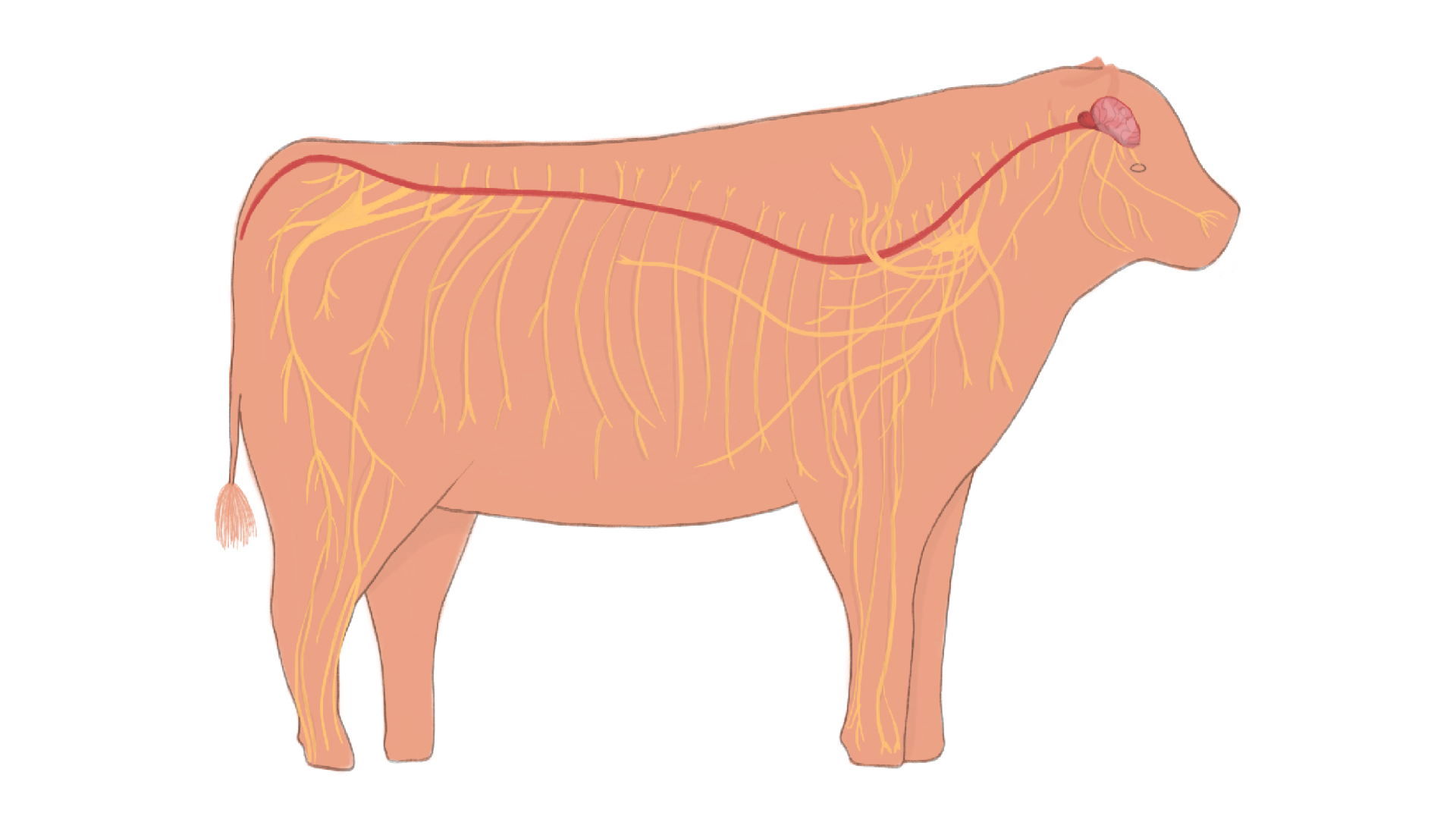
By the end of the session you’ll understand:
- The central nervous system (brain and spinal cord).
- The peripheral nervous system (nerves and neurones).
The nervous system coordinates animal movements, sends and receives messages that allow reaction to stimuli like pain, sound, smell and monitors organ activity.
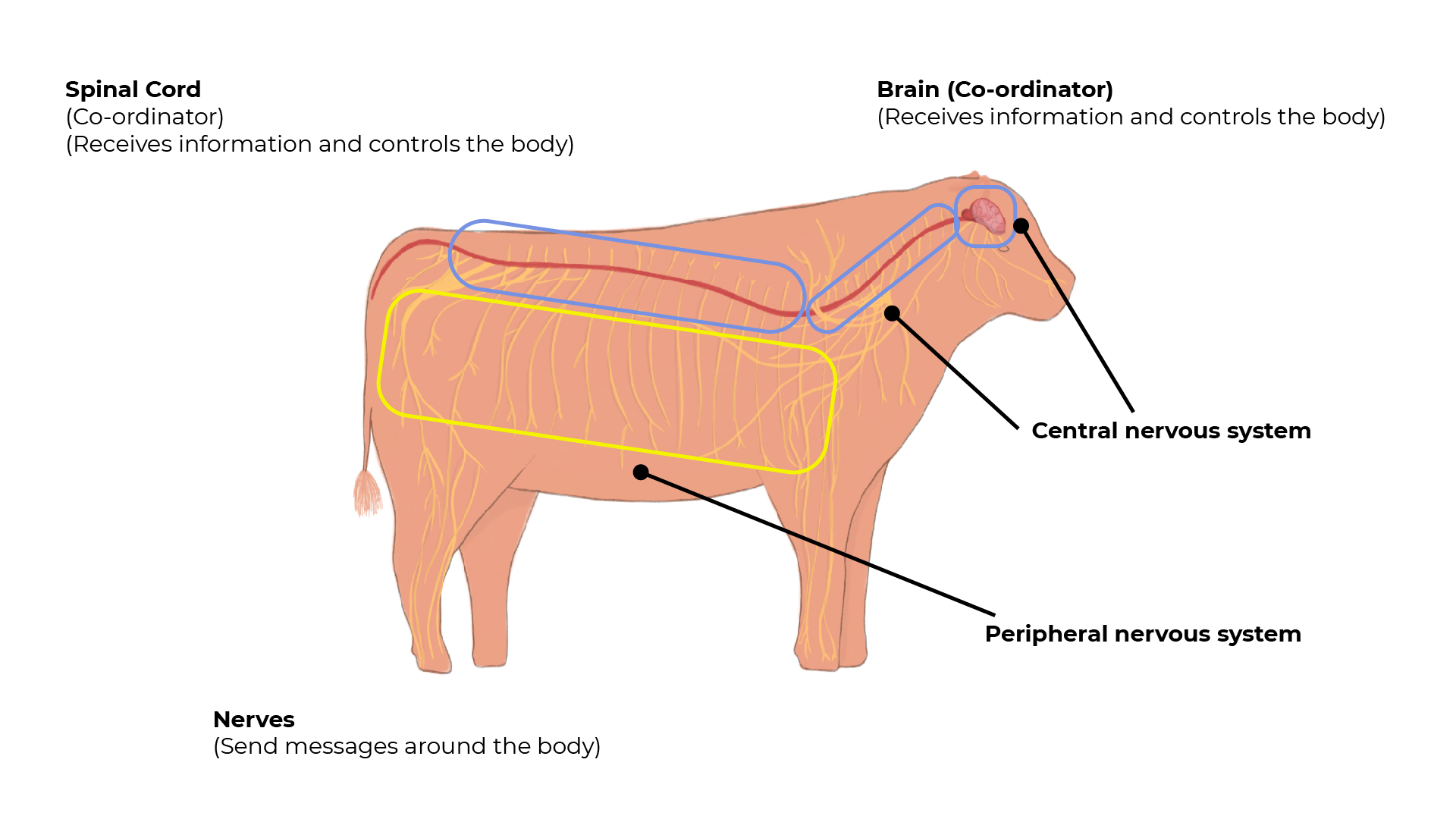
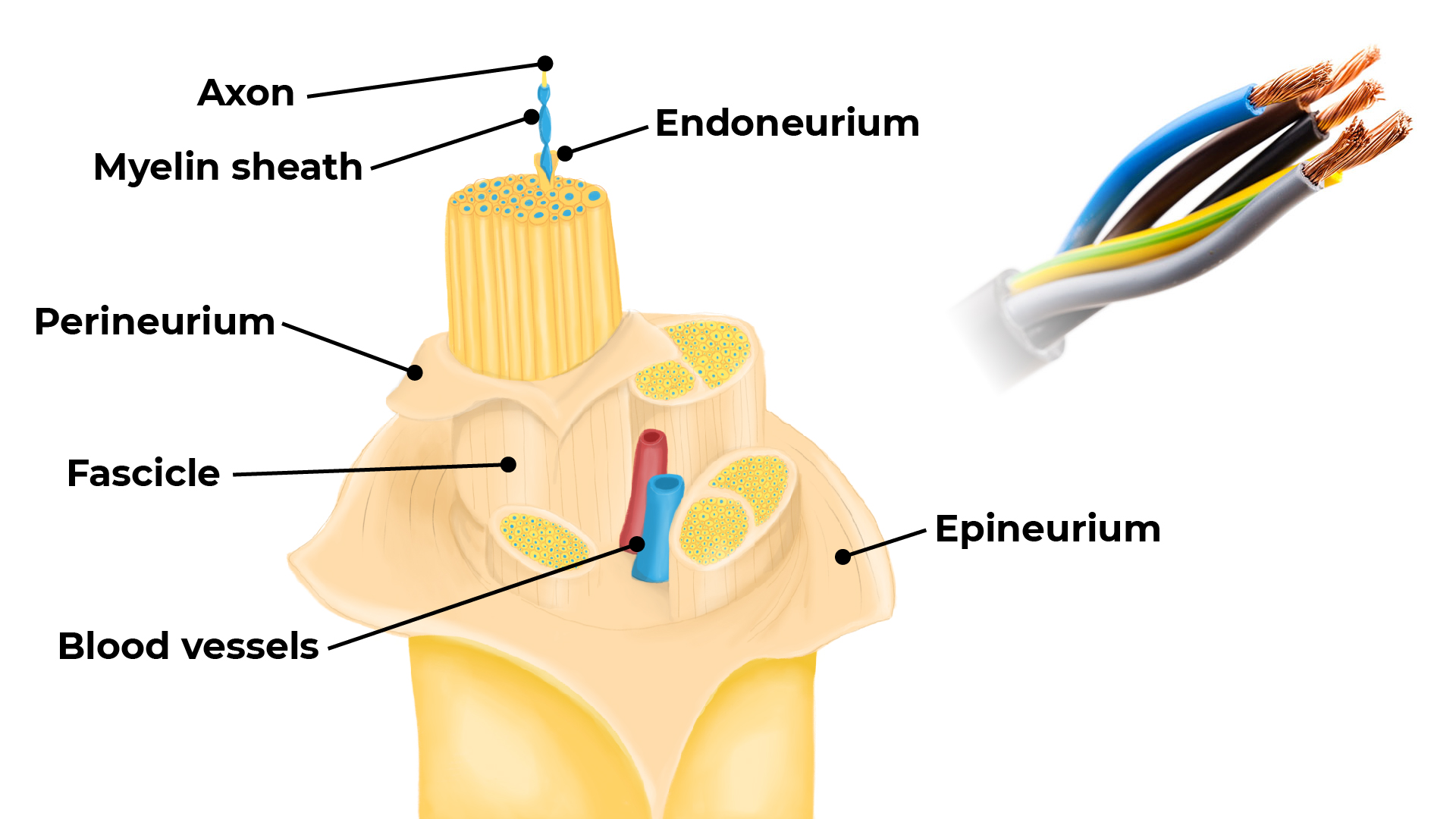
The structure of a nerve, made up of many small neurones, can be compared with the structure of an electrical cable, made up of many small copper wires. Electrical messages are insulated into neurones by a myelin sheath, plastic insulation is used to insulate the electricity in copper wires.
Voluntary actions: The animal has to learn how to do them and think about and decide to do them. e.g. leading with a lead rope.
Reflex actions: We are born with the ability to do these. They happen very quickly. Most protect the body. They happen automatically. e.g. size of the pupil of the eye.
| Voluntary action | Involuntary action |
| Requires thinking | Takes place without thinking |
| Slower | Faster |
| Controlled mainly by the brain | Controlled mainly by the spinal cord |
| For everyday actions | Usually life-saving actions |
Three Types of Neurones
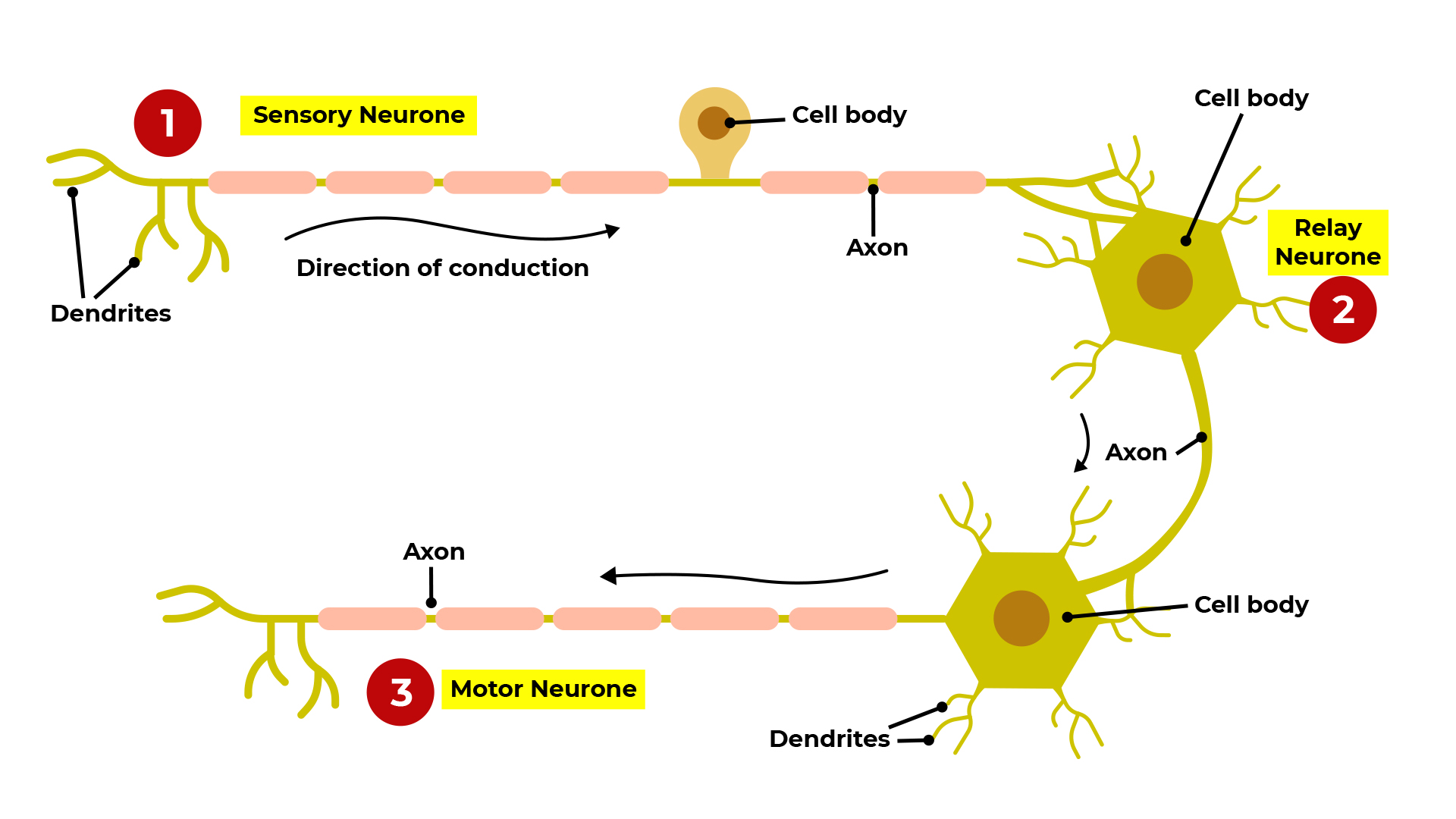
Reflex Arc
A reflex is an automatic response – it is not considered by the brain.
Processing information delivered by a sensory neurone is made immediately by the CNS, and a response occurs via a motor neurone and an effector.
Reflex Arc
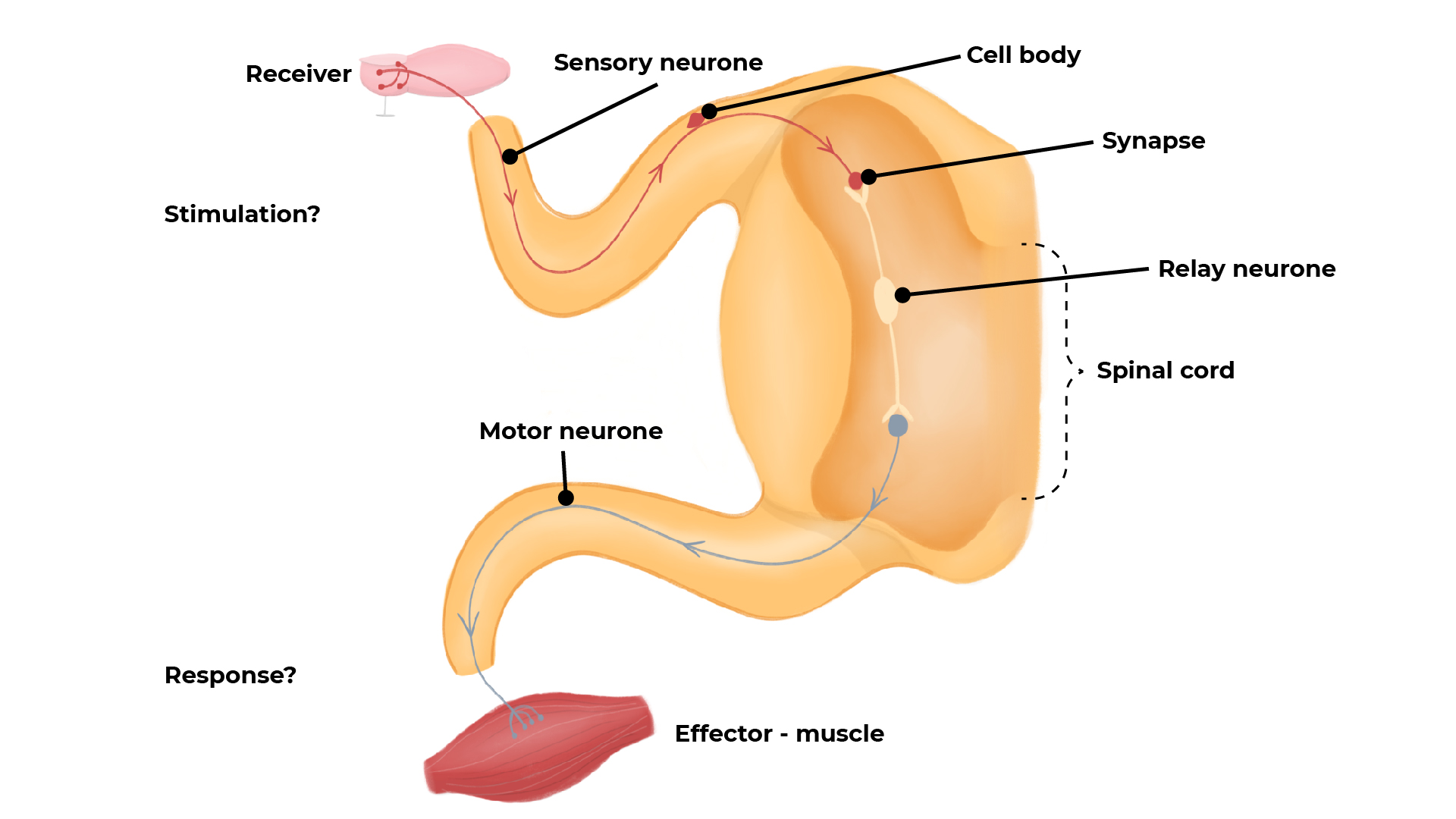
Complete the following worksheet - Download PDF
Task
Create a wordsearch, either by hand or using a computer to include the following terms:
Central nervous system, brain, spinal cord, peripheral nervous system, neurones (sensory, relay and motor), synapses.
Write clues, so that a person knows which term they’re looking for.